-
 bitcoin
bitcoin $102877.190955 USD
1.88% -
 ethereum
ethereum $3430.435064 USD
4.52% -
 tether
tether $0.999264 USD
-0.05% -
 xrp
xrp $2.307310 USD
4.49% -
 bnb
bnb $987.740692 USD
3.82% -
 solana
solana $161.947760 USD
3.97% -
 usd-coin
usd-coin $0.999712 USD
-0.05% -
 tron
tron $0.292810 USD
2.93% -
 dogecoin
dogecoin $0.179738 USD
10.70% -
 cardano
cardano $0.580716 USD
8.75% -
 hyperliquid
hyperliquid $42.463448 USD
8.40% -
 chainlink
chainlink $15.763437 USD
7.05% -
 zcash
zcash $649.595636 USD
17.21% -
 bitcoin-cash
bitcoin-cash $511.610261 USD
7.19% -
 stellar
stellar $0.292537 USD
7.91%
How to Use Fibonacci Retracement for Your XRP Futures Entries?
Fibonacci retracement levels like 61.8% and 50% help identify high-probability entry zones in XRP futures, especially when confirmed by volume, candlestick patterns, and confluence with key technical levels.
Nov 03, 2025 at 02:19 pm
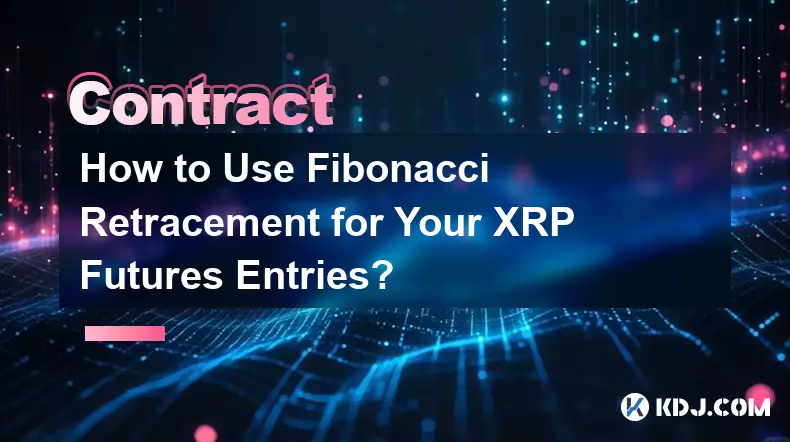
Fibonacci Retracement Basics in XRP Futures Trading
1. Fibonacci retracement is a technical analysis tool derived from the Fibonacci sequence, widely used to identify potential reversal levels in financial markets. In XRP futures trading, it helps traders pinpoint areas where price might pull back before continuing in the original direction. These levels—23.6%, 38.2%, 50%, 61.8%, and 78.6%—are drawn between a significant high and low on the price chart.
2. The 61.8% level, often referred to as the 'golden ratio,' tends to hold strong predictive power in crypto markets due to widespread recognition among traders. When XRP price approaches this zone during a pullback, it frequently triggers reactions such as bounces or reversals, especially if supported by volume or confluence with other indicators.
3. Traders apply Fibonacci retracement by selecting the most recent swing high and swing low on the XRP/USD futures chart. For uptrends, the tool is drawn from the low to the high; for downtrends, from the high to the low. This creates horizontal lines at key percentages where price could find support or resistance.
4. It's critical to use higher timeframes like the 4-hour or daily charts when applying Fibonacci levels to XRP futures. Lower timeframes can produce false signals due to market noise, while larger frames offer more reliable zones that institutional players may also be watching.
5. The effectiveness of Fibonacci retracement increases when combined with candlestick patterns, moving averages, or RSI divergence near the retracement levels. For example, a bullish engulfing pattern forming at the 61.8% retracement during an uptrend adds confidence to a long entry in XRP futures contracts.
Identifying High-Probability Entry Zones
1. A common strategy involves waiting for XRP futures price to retrace into the 61.8% or 50% Fibonacci level after a strong impulse move. If price shows signs of stabilization—such as tight-range candles or a shift in momentum—this area becomes a valid entry point for continuation trades.
2. Confluence plays a major role. If the 61.8% retracement aligns with a prior support/resistance level, trendline, or 200-period EMA, the probability of a successful trade rises significantly. Such multi-layered validation reduces reliance on Fibonacci alone.
3. Short-term traders often place limit orders slightly above the 61.8% level in an uptrend (or below in a downtrend) to ensure execution once price reacts. Stop-losses are typically set just beyond the 78.6% level to avoid being stopped out by minor volatility spikes.
4. Volume analysis near Fibonacci zones provides additional confirmation; rising volume as price approaches the level suggests accumulation or distribution, reinforcing the validity of the entry zone. A drop in volume may indicate lack of interest, warning against premature entries.
5. Some traders use partial entries—allocating a portion of their position at the 50% level and adding more at 61.8% if price continues downward—allowing them to average into stronger setups without overcommitting early.
Managing Risk and Position Size
1. Proper risk management requires defining the maximum loss per trade before entering any XRP futures position. This amount should never exceed 1-2% of the trader’s total account equity, preserving capital over multiple trades.
2. The distance between the entry point and the stop-loss determines position size. For instance, if entering long at $0.75 with a stop at $0.72 (below the 78.6% level), and risking $100, the number of contracts is calculated based on this $300 per-contract risk (assuming micro futures).
3. Take-profit targets are commonly placed at previous swing highs (for longs) or swing lows (for shorts). Alternatively, extensions like 127.2% or 161.8% of the initial move can serve as profit-taking zones in trending environments.
4. Scaling out of positions—closing half at the first target and letting the rest run with a trailing stop—helps lock in gains while maintaining exposure to extended moves. This approach works well in volatile assets like XRP.
5. Avoid adjusting stop-losses wider after entry unless justified by structural changes on the chart; doing so turns disciplined trading into emotional gambling. Discipline around predefined rules separates consistent performers from impulsive traders.
Frequently Asked Questions
What timeframe is best for applying Fibonacci retracement to XRP futures? The 4-hour and daily timeframes provide the most reliable Fibonacci levels for XRP futures. These frames filter out short-term noise and align better with institutional order flow, increasing the significance of retracement zones.
Can Fibonacci retracement be used in ranging XRP markets? Yes, but with caution. In sideways markets, price often oscillates between the 38.2% and 61.8% levels. Traders may fade moves toward these extremes rather than expecting trend continuation, treating them as dynamic support and resistance.
How do you confirm a Fibonacci bounce in real-time? Look for reversal candlestick patterns like hammers or shooting stars, coupled with momentum shifts shown by RSI or MACD. Increased buying or selling volume at the level further validates the reaction, signaling a higher chance of follow-through.
Should Fibonacci levels be redrawn frequently in fast-moving XRP markets? Only update the retracement when a clear new swing high or low forms that invalidates the prior structure. Constant redrawing leads to confusion and overfitting. Stick to major, well-defined swings for consistency.
Disclaimer:info@kdj.com
The information provided is not trading advice. kdj.com does not assume any responsibility for any investments made based on the information provided in this article. Cryptocurrencies are highly volatile and it is highly recommended that you invest with caution after thorough research!
If you believe that the content used on this website infringes your copyright, please contact us immediately (info@kdj.com) and we will delete it promptly.
- Ripple (XRP) in 2026: Hold or Fold? A Look at XRP's Future and Emerging DeFi Alternatives
- 2025-11-08 18:35:01
- Zcash ZEC Coin Price Explosion: From Privacy Niche to Center Stage
- 2025-11-08 18:55:01
- Berachain Price Prediction: Navigating the Honeycomb Hype in Crypto
- 2025-11-08 18:55:01
- Arthur Hayes, Gold, and Bitcoin: A Modern Monetary Trinity?
- 2025-11-08 19:15:01
- Shiba Inu's Next Move: Navigating a Shifting Market
- 2025-11-08 19:20:01
- Pakistan's Crypto Crossroads: Balancing Opportunity with Asset-Backed Realities
- 2025-11-08 19:20:01
Related knowledge

What is a state machine and how can a contract be designed as one?
Nov 08,2025 at 02:19pm
Understanding State Machines in Blockchain Context1. A state machine is a computational model used to design systems that transition between defined s...

How do you upgrade a smart contract using the UUPS proxy pattern?
Nov 09,2025 at 01:19am
Understanding the UUPS Proxy Pattern in Smart Contract DevelopmentThe UUPS (Universal Upgradeable Proxy Standard) pattern has become a cornerstone in ...
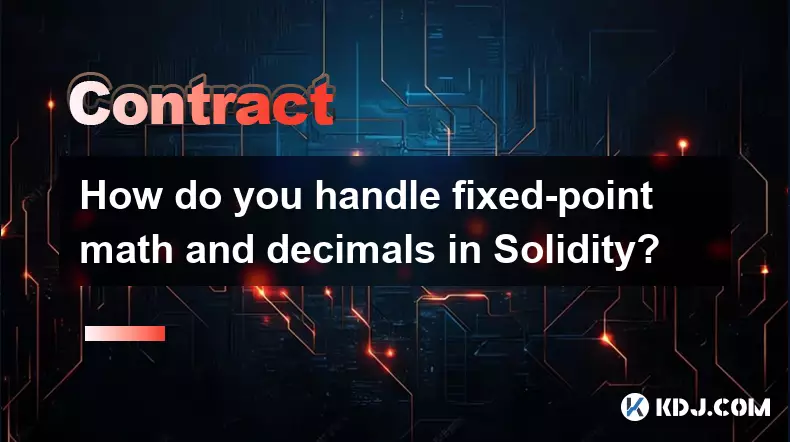
How do you handle fixed-point math and decimals in Solidity?
Nov 08,2025 at 11:40pm
Understanding Fixed-Point Arithmetic in Solidity1. Solidity does not natively support floating-point numbers, which means developers must rely on fixe...
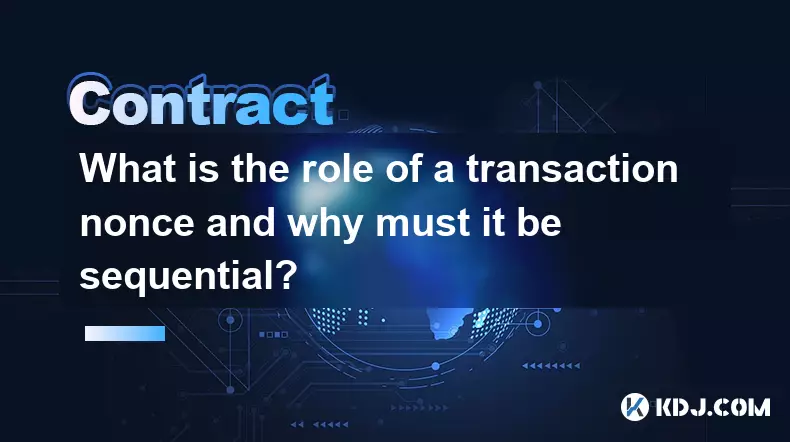
What is the role of a transaction nonce and why must it be sequential?
Nov 09,2025 at 01:00am
Understanding the Transaction Nonce in Blockchain Systems1. A transaction nonce is a number used once, associated with a user's account in blockchain ...
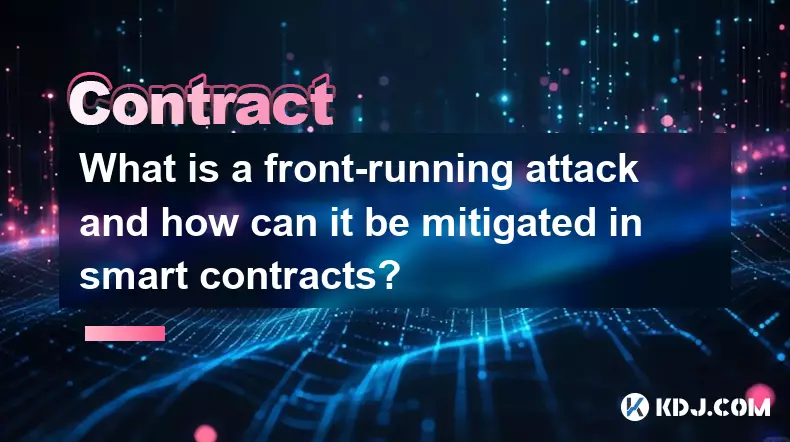
What is a front-running attack and how can it be mitigated in smart contracts?
Nov 08,2025 at 11:20am
Understanding Front-Running in Blockchain Transactions1. In the context of blockchain and decentralized applications, a front-running attack occurs wh...
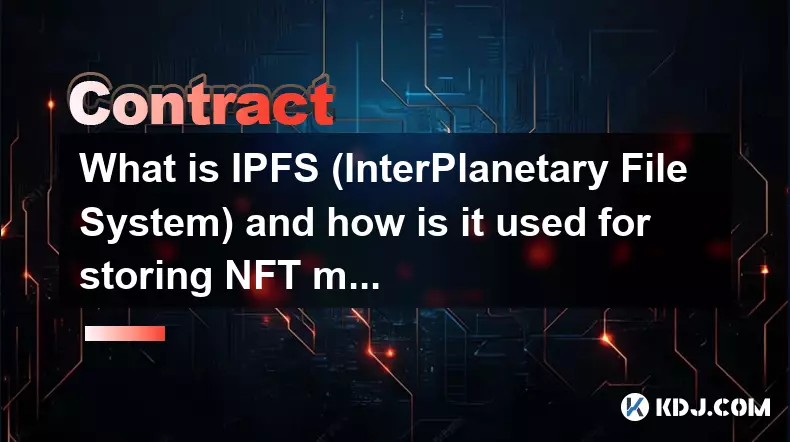
What is IPFS (InterPlanetary File System) and how is it used for storing NFT metadata?
Nov 08,2025 at 06:00pm
Understanding IPFS and Its Role in Decentralized Storage1. The InterPlanetary File System (IPFS) is a peer-to-peer hypermedia protocol designed to mak...

What is a state machine and how can a contract be designed as one?
Nov 08,2025 at 02:19pm
Understanding State Machines in Blockchain Context1. A state machine is a computational model used to design systems that transition between defined s...

How do you upgrade a smart contract using the UUPS proxy pattern?
Nov 09,2025 at 01:19am
Understanding the UUPS Proxy Pattern in Smart Contract DevelopmentThe UUPS (Universal Upgradeable Proxy Standard) pattern has become a cornerstone in ...

How do you handle fixed-point math and decimals in Solidity?
Nov 08,2025 at 11:40pm
Understanding Fixed-Point Arithmetic in Solidity1. Solidity does not natively support floating-point numbers, which means developers must rely on fixe...

What is the role of a transaction nonce and why must it be sequential?
Nov 09,2025 at 01:00am
Understanding the Transaction Nonce in Blockchain Systems1. A transaction nonce is a number used once, associated with a user's account in blockchain ...

What is a front-running attack and how can it be mitigated in smart contracts?
Nov 08,2025 at 11:20am
Understanding Front-Running in Blockchain Transactions1. In the context of blockchain and decentralized applications, a front-running attack occurs wh...

What is IPFS (InterPlanetary File System) and how is it used for storing NFT metadata?
Nov 08,2025 at 06:00pm
Understanding IPFS and Its Role in Decentralized Storage1. The InterPlanetary File System (IPFS) is a peer-to-peer hypermedia protocol designed to mak...
See all articles





















![The Graph Price Prediction [GRT Crypto Price News Today] The Graph Price Prediction [GRT Crypto Price News Today]](/uploads/2025/11/07/cryptocurrencies-news/videos/690d4df44fe69_image_500_375.webp)



















































